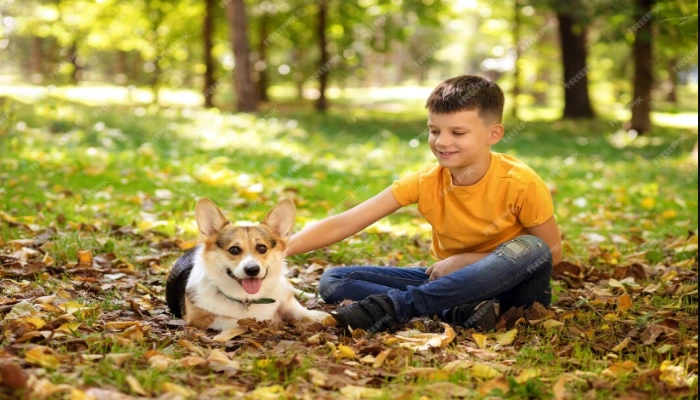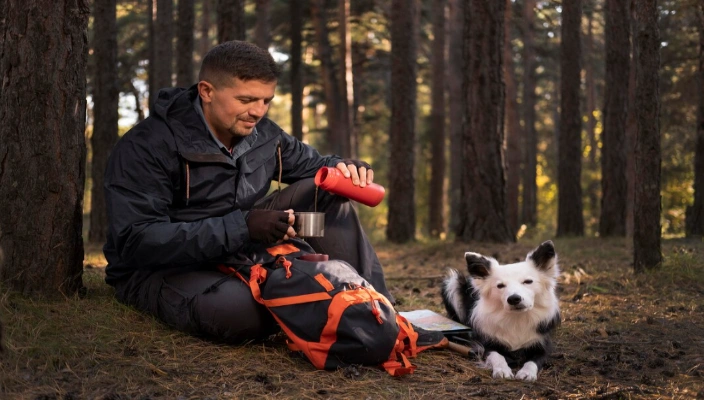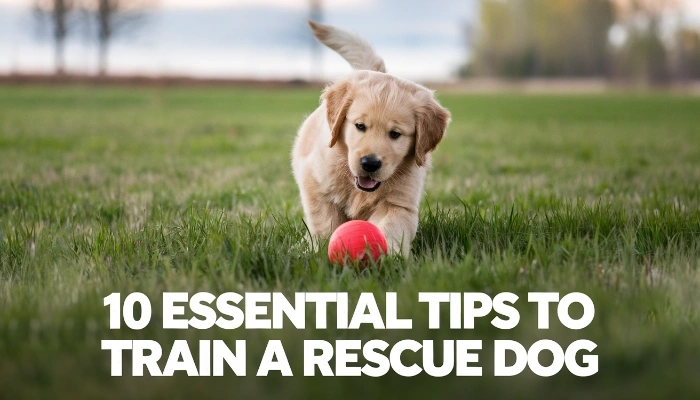How to Train a Rescue Dog: 10 Essential Tips for Success
Bringing a 10 Tips For Rescue Dog into your own home is a worthwhile enjoyment, however, it also comes with particular challenges. Unlike dogs from breeders, rescue puppies can also have beyond traumas, horrific conduct, or agree with problems that require persistence and special schooling strategies. The key to success is building trust, using advantageous reinforcement, and being regular. In this manual, we’re going to discover 10 essential hints that will help you educate your rescue dog and set them up for a happy, healthful lifestyle.
Building Trust: The First Step to Successful Training
Building trust is the inspiration for any successful dog training system. Just like how we depend on trust in our relationships with humans, puppies want to experience that they can accept as true with their owners to create a secure, consistent, and loving environment. When a dog trusts its owner, it’s far more likely to observe instructions, be aware of schooling, and experience steady in its environment. This acceptance as true with-constructing manner begins with simple things like spending great time together with your dog, offering treats and superb reinforcement, and heading off harsh or confusing techniques. It’s about displaying your dog that you’re reliable, calm, and regular, which makes them experience security sufficient to examine and develop.
Ways to Build Trust:
Spend quiet time together without demanding too much.
Reward calm and relaxed behavior with treats and praise.
Avoid loud noises or sudden movements that could startle them.
One of the perfect ways to build belief together with your 10 Tips For Rescue Dog is through clear communique. Dogs apprehend body language, tone of voice, and movements greater than phrases. For example, whilst you use a satisfied, excited voice to give praise and an organized, calm tone for corrections, your dog learns to distinguish between what’s right and what’s wrong in a way that feels reassuring, now not horrifying. Positive reinforcement, like giving treats or affection when your dog performs the precise conduct, also strengthens this acceptance as true. Remember, agreeing doesn’t occur in a single day. It takes endurance, consistency, and plenty of love. The greater you display your dog that you may be depended on, the less difficult schooling becomes, and the stronger your bond could be in the end.
Creating a Safe and Comfortable Environment

The first thing any rescue dog needs is a safe comfortable space where he or she can calm down. Reasonable environment helps them minimize stress and thus they are able to devote their attention to training.
How to Create Comfort:
Provide a quiet area with a bed or crate where they can retreat.
Use calming aids like white noise machines or pheromone diffusers if needed.
Establish a consistent routine to help them feel secure.
1. Give Them Time to Adjust
The best 10 Tips For Rescue Dogs have gone through a lot whether or not they had been abandoned, mistreated, or spent time in a safe haven. When you bring them domestic, they want time to decompress and modify to their new surroundings. Don’t anticipate them to be cushy right away. Some puppies may additionally take days, whilst others want weeks or even months.
Pro Tip: Follow the 3-3-3 Rule
- First 3 days: Your dog may feel overwhelmed, anxious, or shy. They might not eat much or explore much.
- First 3 weeks: They start to settle in and show their true personality.
- First 3 months: They fully adapt to their new life, bond with you, and feel at home.
2. Establish a Routine
Dogs thrive on routine. Set regular times for meals, walks, playtime, and potty breaks. This allows them feel steady and apprehend what to expect every day. A established routine reduces tension and encourages good conduct.
3. Use Positive Reinforcement
Rescue dogs with the best 10 tips may have skilled harsh remedies in the past, so avoid punishment-primarily based training. Instead, reward true conduct with treats, rewards, or toys. Positive reinforcement builds trust and encourages them to repeat exact behavior.
What to Do:
✅ Reward them immediately when they follow a command. ✅ Use high-value treats like small pieces of chicken or cheese. ✅ Offer verbal praise (“Good job, buddy!”) and petting.
What to Avoid:
❌ Yelling or hitting—this will break trust and cause fear. ❌ Inconsistent rewards—be clear and consistent.
4. Start with Basic Commands

Before tackling complex tricks, focus on basic obedience commands like:
- Sit
- Stay
- Come
- Leave it
- Down
These commands help establish communication and create a strong foundation for further training.
Training Tip: Use Short Sessions
Keep training sessions short and fun—about 5-10 minutes at a time. Rescue dogs may have short attention spans, so avoid overwhelming them.
5. Socialize Gradually
The best 10 Tips For Rescue Dog may not be used for other dogs, people, or different environments. Introduce them slowly to new experiences to prevent anxiety or aggression.
How to Socialize Safely:
- Take them for short walks in quiet areas before moving to busier places.
- Let them observe other dogs from a distance before direct contact.
- Expose them to different sounds, textures, and environments gradually.
6. Potty Train with Patience
Some 10 Tips For Rescue Dogs may not be house-trained, even if they are adults. Establish a bathroom routine and reward them when they go outside.
Potty Training Steps:
- Take them out after waking up, eating, drinking, and playing.
- Praise and reward them when they potty outside.
- If accidents happen, clean up without punishment and continue training.
7. Prevent Separation Anxiety
Many rescue dogs develop separation anxiety due to abandonment or past experiences. To prevent this:

- Start with short absences (5-10 minutes) before increasing time away.
- Provide a safe space like a crate or cozy bed with toys.
- Leave a calm goodbye and avoid emotional exits.
8. Address Fear and Trauma Gently
Rescue dogs might react fearfully to loud noises, sudden movements, or certain people. Observe their triggers and work through them at their pace.
Helping a Fearful Dog:
- Desensitize them by slowly introducing their fears in a controlled way.
- Use calming aids like a Thundershirt, soft music, or pheromone diffusers.
- Be patient—never force them into scary situations.
9. Encourage Play and Mental Stimulation
A bored dog is more likely to develop bad habits. Keep your rescue dog engaged with interactive toys, puzzle feeders, and training games.
Fun Activities:
- Hide treats in a snuffle mat.
- Play tug-of-war or fetch.
- Try simple agility exercises in the backyard.
10. Consider Professional Help if Needed

If your rescue dog shows extreme fear, aggression, or difficulty learning, consider working with a professional trainer or behaviorist. They can provide customized training plans to help your dog succeed.
When to Seek Help:
- Aggressive reactions to people or other pets.
- Extreme fear that prevents daily activities.
- Difficulty with basic commands despite consistent training.
Common Behavioral Challenges and How to Overcome Them
Rescue dogs may exhibit behaviors like barking, chewing, or house-soiling. These issues can often be corrected with understanding and consistency.
Addressing Common Issues:
Barking: Redirect their attention and teach the “quiet” command.
Chewing: Provide appropriate chew toys and ensure they get enough exercise.
House-Soiling: Stick to a consistent potty routine and reward them for going outside.
The Role of Patience and Consistency in Training
Training a rescue dog isn’t a sprint; it’s a marathon. Patience and consistency are essential to help your dog feel safe and learn new behaviors. Progress might come in small steps, but every bit of effort strengthens your bond and builds trust.
When to Seek Help from a Professional Trainer

If you encounter persistent issues or feel overwhelmed, don’t hesitate to seek help from a professional trainer. Rescue dogs sometimes have deep-seated behavioral challenges that require expert guidance.
When to Seek Help:
Aggression towards people or animals.
Extreme fear or anxiety that doesn’t improve over time.
Difficulty responding to basic training techniques.
Final Thoughts
10 Tips For Rescue Dog takes time, but with staying power, consistency, and love, they can emerge as a remarkable companion. Each small achievement builds their self-assurance and strengthens their bond. Remember, your dog isn’t simply gaining knowledge of new behaviors. They’re additionally gaining knowledge to agree with you. Give them the guide they need, and also you’ll each enjoy a satisfied and enjoyable lifestyle together.
- How to Stop Your Dog From Jumping on People: 10 Effective Methods
- Top 12 Best Dog 0bedience Training Methods Near Me
- The 12 Most Common Dog Training Mistakes and Their Solutions
FAQS
Training a rescue dog can take anywhere from a few weeks to several months, depending on the dog’s background, temperament, and your consistency. Some dogs may have past traumas that make training take longer, but with patience and positive reinforcement, progress is always possible.
Building trust takes time and consistency. Show your dog that you’re a reliable source of safety and love. Spend quality time together, offer treats, and avoid punishment-based training methods. The more your dog sees you as a friend and not a threat, the easier training will be.
If you’re struggling with training or your dog has behavioral issues that you’re unsure how to address, seeking the help of a professional dog trainer or behaviorist can be a great idea. A professional can give you specific strategies and guidance tailored to your dog’s needs.




